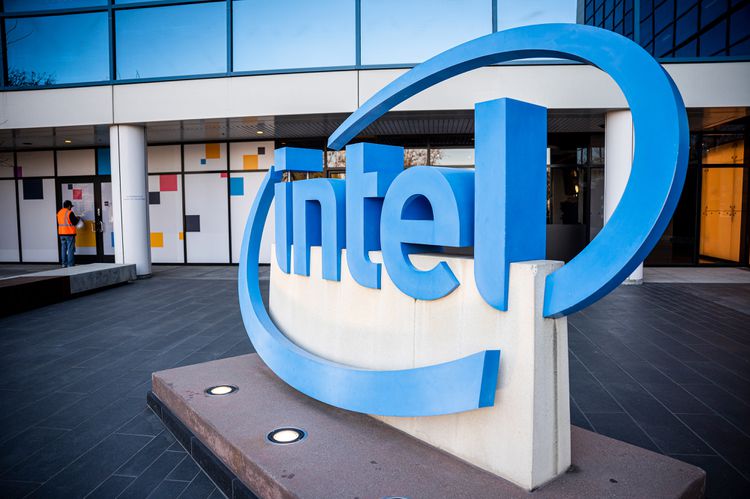
Amazon shuts down China AI Lab in Shanghai, joining tech giants like IBM and Microsoft in scaling back operations in China. The closure, announced in July 2025, reflects growing geopolitical tensions between the United States and China, pushing American tech companies to rethink their research and development strategies in the region. This move marks another step in Amazon’s gradual withdrawal from China, following the closure of its e-commerce marketplace in 2019 and Kindle store in 2022. The decision underscores the challenges U.S. firms face in navigating regulatory hurdles and political pressures in China’s tech landscape.
Key Takeaways
- Amazon’s Shanghai AI lab, established in 2018, focused on artificial intelligence innovations like graph neural networks.
- The closure aligns with layoffs in Amazon Web Services (AWS) and mirrors pullbacks by IBM and Microsoft.
- Geopolitical tensions and U.S. export controls on advanced chips are driving American tech firms out of China.
- The lab’s work generated nearly $1 billion in sales through an open-source neural network framework.
- This move signals a broader trend of U.S. companies consolidating research and development in safer markets like the U.S. and India.
Why Amazon Shut Down Its Shanghai AI Lab
The decision to close the Shanghai AI lab stems from a mix of strategic and external pressures. Wang Minjie, a chief applied scientist at the lab, announced the closure on WeChat, citing “strategic adjustments amid U.S.-China tensions.” The lab, launched by Amazon Web Services (AWS) in 2018, was a hub for cutting-edge AI research, particularly in graph neural networks and natural language processing. Despite its success, including over 100 academic publications and nearly $1 billion in revenue from its neural network framework, Amazon could not ignore the escalating geopolitical climate.
Contents
- 1 Geopolitical Tensions Reshaping Tech Strategies
- 2 Amazon’s Strategic Realignment
- 3 Other Tech Giants Follow Suit
- 4 China’s Push for AI Self-Sufficiency
- 5 Financial and Operational Implications
- 6 U.S. vs. China: The AI Competition
- 7 Implications for Global Tech Collaboration
- 8 Timeline of Amazon’s China Retreat
- 9 Potential New Hubs for AI Research
Geopolitical Tensions Reshaping Tech Strategies
Rising geopolitical tensions between the U.S. and China have created a challenging environment for American tech companies. The U.S. government has increased scrutiny of firms operating in China, imposing export controls on advanced chips and cloud technologies critical for AI development. President Donald Trump’s aggressive tariff policies have further accelerated this shift, pushing companies to reduce their footprint in China. Amazon’s closure follows similar moves by IBM, which shut down its China R&D division in 2024, and Microsoft, which relocated hundreds of AI staff from China.
Impact of U.S. Export Controls
The U.S. has restricted China’s access to advanced semiconductors and chip-making equipment from companies like Nvidia and AMD. These restrictions limit China’s ability to train large-scale AI models, affecting research labs like Amazon’s. Wang Minjie noted that these controls contributed to the lab’s dissolution, as they hinder collaboration with the global AI community. This regulatory pressure has forced U.S. firms to prioritize operations in regions with fewer restrictions, such as the U.S. and India.
Amazon’s Strategic Realignment
Amazon’s decision is also part of a broader cost-cutting strategy. The company recently announced layoffs in its AWS division, citing the growing adoption of generative AI tools. The Shanghai lab’s closure aligns with these efforts to streamline resources and focus on markets with more stable regulatory environments. Amazon has not confirmed plans to relocate the lab’s work but may shift AI research to hubs in the U.S. or Europe.
The Broader Trend of U.S. Tech Pullbacks from China
Amazon is not alone in retreating from China. The tech industry is witnessing a significant shift as U.S. companies scale back operations due to geopolitical and regulatory challenges.
Other Tech Giants Follow Suit
- IBM: In 2024, IBM closed its China R&D division, affecting over 1,000 jobs, due to regulatory issues and declining revenue.
- Microsoft: The company offered relocation to hundreds of its Chinese AI and cloud staff in 2024, citing U.S. restrictions on sensitive technologies.
- McKinsey & Company: The U.S. defense contractor announced plans to pull back its AI operations in China in July 2025, focusing on India instead.
- Apple: Chinese authorities ordered 300 India-based Chinese workers at FoxConn, Apple’s iPhone producer, to return home in 2025, signaling Apple’s shift to other manufacturing hubs.
Table: U.S. Tech Companies Scaling Back in China
| Company | Action Taken | Year | Reason |
|---|---|---|---|
| Amazon | Closed Shanghai AI Lab | 2025 | Geopolitical tensions, cost-cutting |
| IBM | Shut down China R&D division | 2024 | Regulatory issues, declining revenue |
| Microsoft | Relocated AI and cloud staff | 2024 | U.S. tech restrictions |
| McKinsey | Pulled back AI operations | 2025 | Geopolitical pressures |
| Apple | Shifted manufacturing to India | 2025 | Chinese regulatory actions |
China’s Push for AI Self-Sufficiency
China is aggressively pursuing self-sufficiency in artificial intelligence and technology. The Chinese government has invested heavily in AI, aiming to become the global leader by 2030. According to a 2025 report by Insikt Group, China trails the U.S. in AI model performance by three to six months but is closing the gap. The country’s focus on open-source AI models, like those from DeepSeek and Alibaba, is attracting global users with lower costs compared to U.S. offerings like ChatGPT.
Impact on Amazon’s AI Strategy
The closure of the Shanghai AI lab raises questions about Amazon’s global research and development strategy. The lab, led by NYU Shanghai professor Zhang Zheng, contributed significantly to AWS’s AI capabilities, particularly through the Deep Graph Library (DGL), an open-source framework for deep learning on graphs.
Financial and Operational Implications
- Revenue Loss: The lab’s neural network framework generated nearly $1 billion in sales, a significant contribution to Amazon’s e-commerce and cloud revenue.
- Research Setback: The closure may slow progress in areas like natural language processing and machine learning, though Amazon could redirect efforts to other hubs.
- Talent Redistribution: The lab’s headcount is unclear, but AWS employed over 1,000 staff in China at its peak. Affected researchers may be relocated or let go.
Listicle: 5 Key Impacts of the Shanghai AI Lab Closure
- Loss of Innovation Hub: The lab was a center for advanced AI research, producing over 100 academic papers.
- Geopolitical Fallout: The closure reflects broader U.S.-China tech decoupling, limiting cross-border collaboration.
- Cost-Cutting Measures: Aligns with Amazon’s global layoffs in AWS to optimize resources.
- Shift to Safer Markets: Amazon may redirect AI efforts to the U.S., Europe, or India.
- China’s Gain: Local talent may join Chinese AI firms, boosting China’s self-sufficiency efforts.
What This Means for the Global AI Race
The closure of Amazon’s Shanghai lab is a microcosm of the broader U.S.-China AI race. The U.S. maintains a lead in AI innovation, driven by advanced semiconductors, cutting-edge research, and access to capital. However, China’s investments in AI infrastructure and talent are narrowing the gap.
U.S. vs. China: The AI Competition
- U.S. Strengths: Superior chip technology, elite universities, and high venture capital investment.
- China’s Advantages: Large data pools, growing human capital, and open-source AI models.
- Current Gap: Chinese AI models lag U.S. models by three to six months, but the gap is shrinking.
- Future Outlook: China’s focus on AI diffusion and patents could challenge U.S. dominance by 2030.
Table: U.S. vs. China AI Capabilities (2025)
| Aspect | United States | China |
|---|---|---|
| Model Performance | Leads by 3-6 months | Closing gap rapidly |
| Investment | High VC and government funding | $327M in state R&D (2025) |
| Talent | Elite universities, immigration | Large talent pool, state support |
| Regulation | Flexible, innovation-friendly | Strict, slows public AI deployment |
| Technology Diffusion | Strong in enterprise adoption | Leads in AI patents |
Implications for Global Tech Collaboration
The retreat of U.S. tech giants from China risks fragmenting the global AI ecosystem. Cross-border collaboration, once a driver of innovation, is declining as companies prioritize geopolitical safety. This could lead to parallel AI ecosystems, with the U.S. and China developing distinct standards and models.
Amazon’s History in China
Amazon’s withdrawal from China has been gradual but deliberate. The company faced fierce competition from local players like Alibaba and Pinduoduo, leading to earlier exits.
Timeline of Amazon’s China Retreat
- 2019: Shut down its Chinese e-commerce marketplace due to competition.
- 2022: Discontinued the Kindle e-book store in China.
- 2025: Closed the Shanghai AI lab, marking the end of AWS’s major research presence.
This pattern reflects Amazon’s shift away from consumer-facing operations in China, focusing instead on AWS services for multinational and Chinese tech firms.
The Road Ahead for Amazon and AI
Amazon’s closure of its Shanghai AI lab signals a pivot toward safer, more controlled markets. The company is likely to bolster AI research in the U.S., where it faces fewer regulatory hurdles. AWS continues to invest in tools like SageMaker and graph neural network frameworks, ensuring its AI capabilities remain robust.
Potential New Hubs for AI Research
- United States: Home to Amazon’s headquarters and major tech talent pools.
- India: A growing hub for tech R&D, with lower costs and geopolitical stability.
- Europe: Offers regulatory clarity and access to skilled researchers.
Summary
Amazon shuts down China AI Lab as part of a strategic retreat driven by geopolitical tensions and cost-cutting measures. The Shanghai lab, established in 2018 by AWS, was a key player in artificial intelligence research, contributing nearly $1 billion in sales through its neural network framework. The closure aligns with similar pullbacks by IBM, Microsoft, and other U.S. tech giants, reflecting the challenges of operating in China amid U.S. export controls and regulatory pressures. As Amazon redirects its research and development efforts, the move highlights the growing divide in the global AI race, with implications for innovation, collaboration, and competition.
FAQs
- Why did Amazon shut down its Shanghai AI lab?
The closure was due to strategic adjustments amid U.S.-China geopolitical tensions and part of broader layoffs in AWS. - When was the Shanghai AI lab established?
Amazon Web Services set up the lab in 2018 during the World Artificial Intelligence Conference in Shanghai. - What did the Shanghai AI lab focus on?
The lab specialized in graph neural networks, natural language processing, and open-source projects like the Deep Graph Library. - How much revenue did the lab generate?
Its neural network framework reportedly contributed nearly $1 billion to Amazon’s sales. - Which other U.S. tech companies have scaled back in China?
IBM, Microsoft, McKinsey, and Apple have reduced or relocated operations due to regulatory and geopolitical challenges. - How do U.S. export controls affect AI research in China?
Restrictions on advanced chips and cloud technologies limit China’s ability to train AI models, impacting U.S. firms’ operations. - What is China’s goal in the AI race?
China aims to become the global AI leader by 2030, focusing on self-sufficiency and open-source models. - Will Amazon relocate its Shanghai AI research?
While not confirmed, Amazon may shift AI research to the U.S., India, or Europe. - How does this closure impact the global AI ecosystem?
It risks fragmenting AI research, reducing cross-border collaboration and creating parallel U.S. and Chinese AI ecosystems. - What is the broader trend among U.S. tech firms in China?
Many are scaling back R&D and operations due to geopolitical tensions, regulatory hurdles, and competition from local firms.
STAY AHEAD OF THE CURVE WITH THE LATEST TECH INSIGHTS AND UPDATES! FOR MORE TECH-RELATED NEWS, VISIT TECHBEAMS.



